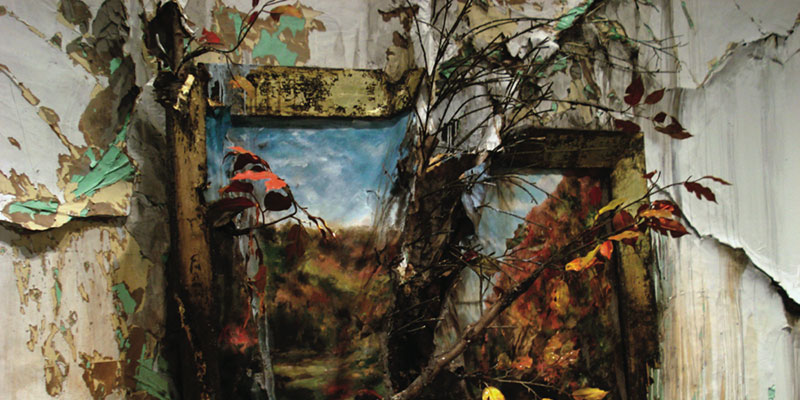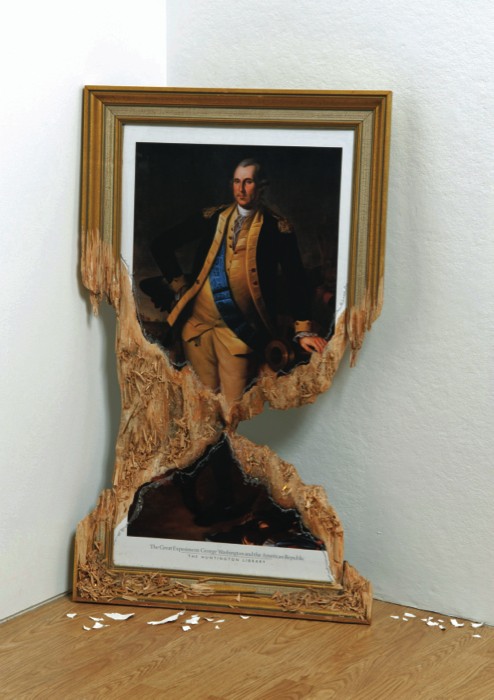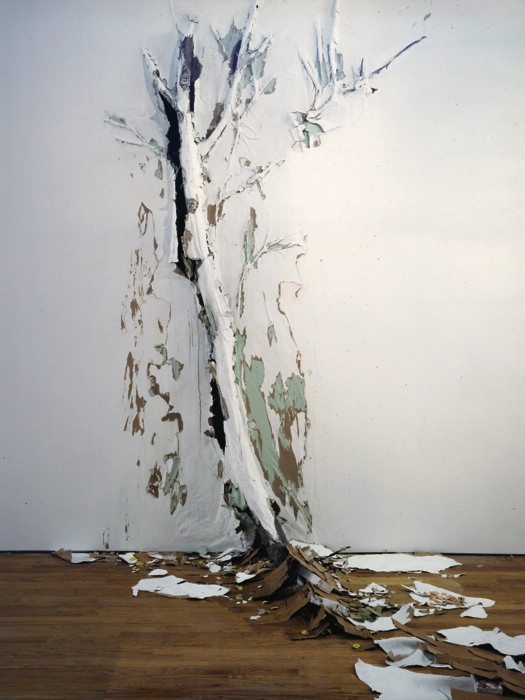Riffing on paintings and sculptures from art history along with the actual gallery space itself, artworks and institutional walls and floors are reconstructed, deconstructed and re-presented as modern ruins. Working with fragile materials such as foamcore, paper, paint and glue, I exploit a scrupulous mimicry of objects and architectural detail only to demolish and transform them by devices often associated with their historical significance. Collage techniques are often utilized to fracture the gallery space and create fabricated portals to exterior environments. The constructed narratives leave the viewer to ponder the alterations and the veracity of the transformation.
Valerie Hegarty’s artwork often poses as artifacts of art history gone awry. Through the combination of real and fabricated components, Hegarty leaves the viewer to wonder at the veracity of the transformation. For the High Line, she will create and install a work that imagines a nineteenth century Hudson River School landscape painting that has been left outdoors, exposed to the elements. Hegarty’s painting is based on Jasper Francis Cropsey’s Autumn on the Hudson River of 1860, a bucolic landscape that shows none of the affects of the Industrial Revolution. Hegarty’s canvas is tattered and frayed, and the partially exposed stretcher bars appear to be morphing into tree branches, as if reverting back to their natural state.
Curator Lauren Ross notes, “Since the nineteenth century, the Hudson has been associated both with Arcadian beauty and industrial development, perceptions both simultaneous and contradictory. Today one can view fading remnants of the river as an active shipping port, as well as recent attempts to return it to a more ‘natural’ state through the development of park areas and pedestrian walking paths, including the High Line itself.” As Hegarty describes it, her piece will “appear as if nature has become the artist, altering the idealized image of the early American wilderness to be a more layered representation of the area and times today”.
Valerie Hegarty ‘s installations create dream- like transitional spaces that expand and fracture the austerity of an exhibition space while dismantling the constructs of image making. Landscaping, is a new installation in which an idyllic woodland scene, seemingly alive and growing, overcomes the gallery in a collision of exterior and interior views.
In previous projects, Hegarty has used a method she refers to as ‘”reverse archeology”, in which layers of painted paper are applied to the gallery walls and then slowly peeled away to give an impression of the disintegration of an architectural apparition from her past. Moving from the discreet gesture of layering onto the surface of the wall to reveal specific memories, Landscaping is the first time that Hegarty’s constructions appear to break through the wall, in an illusion solely constructed from paper and paint. On one level the viewer can become overwhelmed with an inquisitive desire to determine what is real and what is constructed and on another, revel in the make believe.









